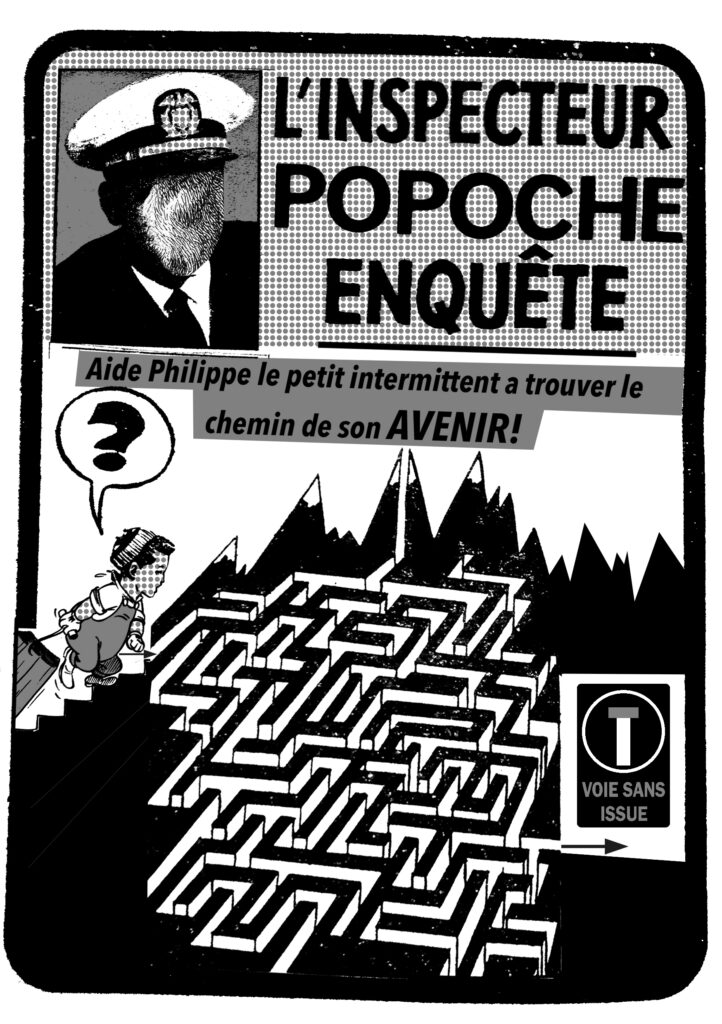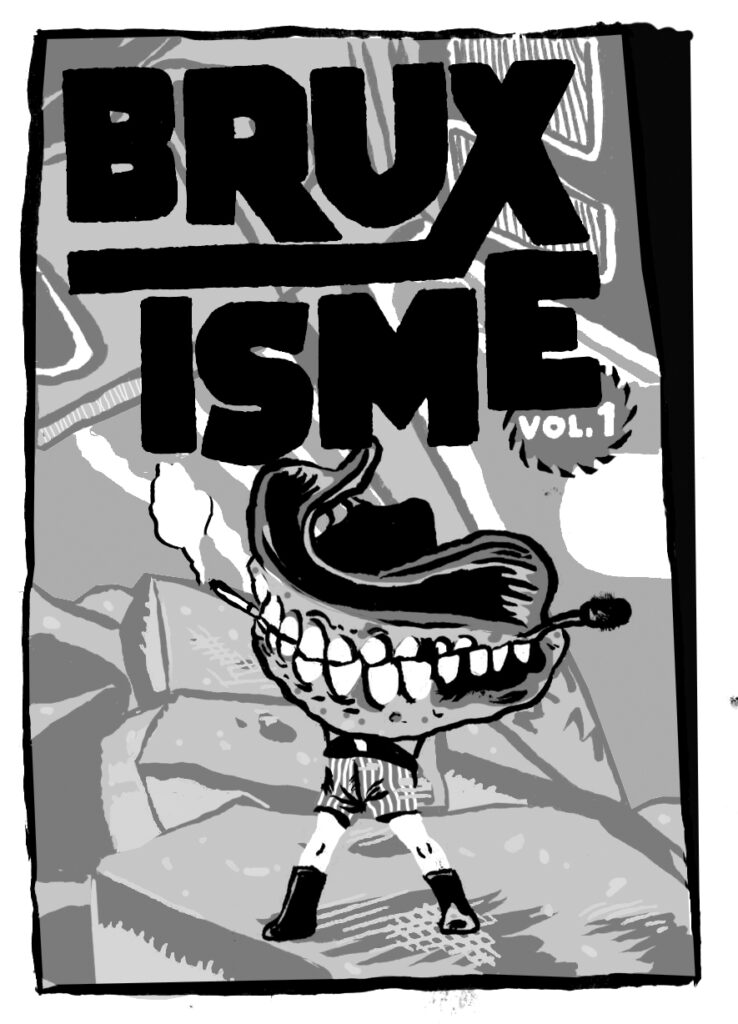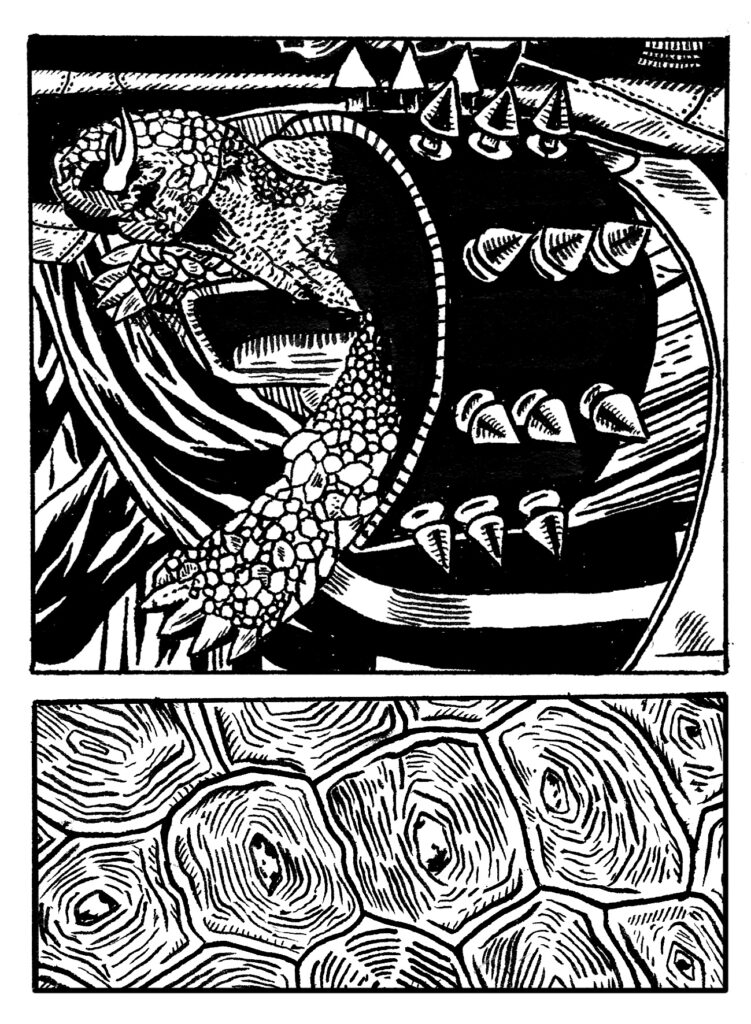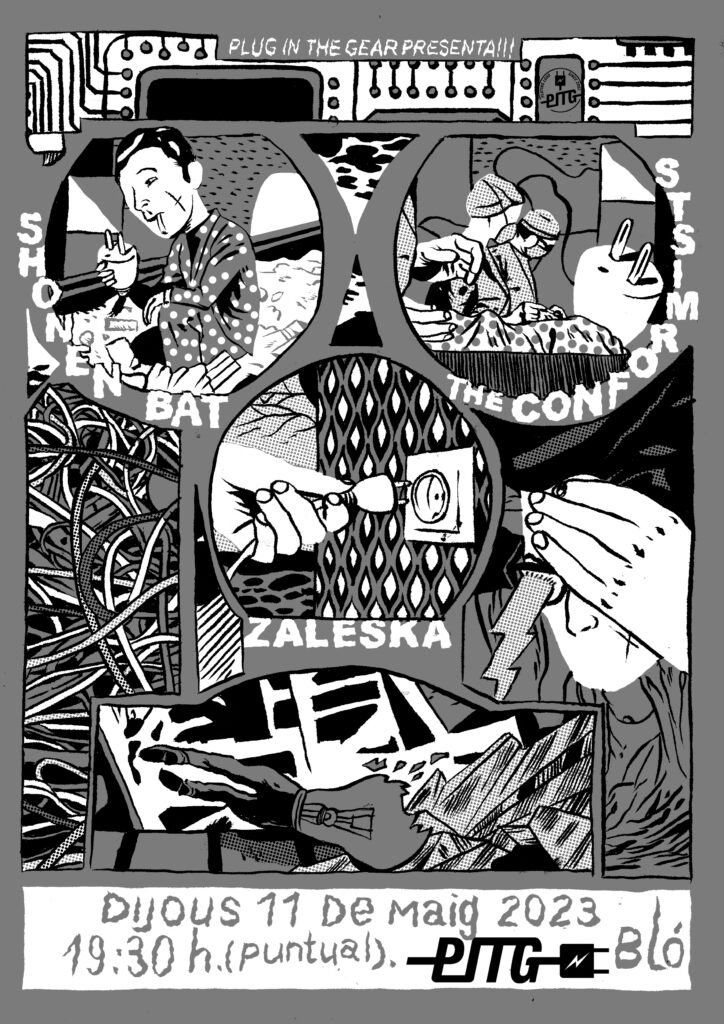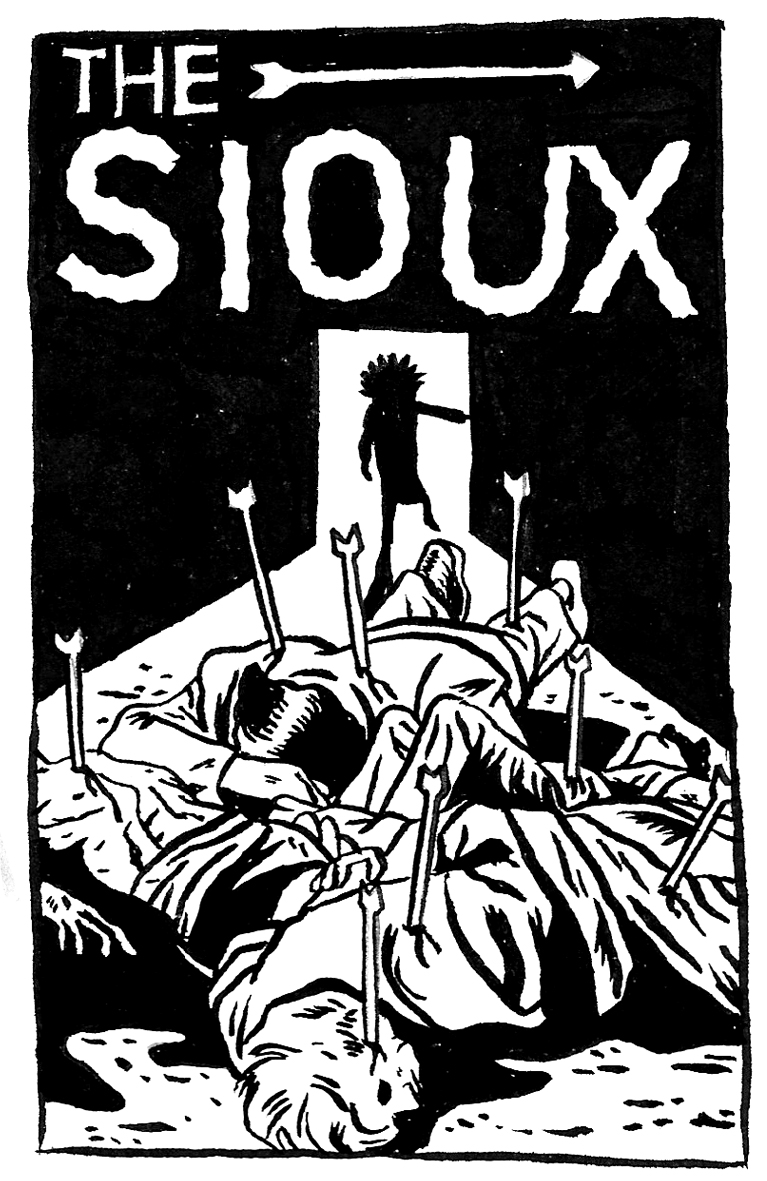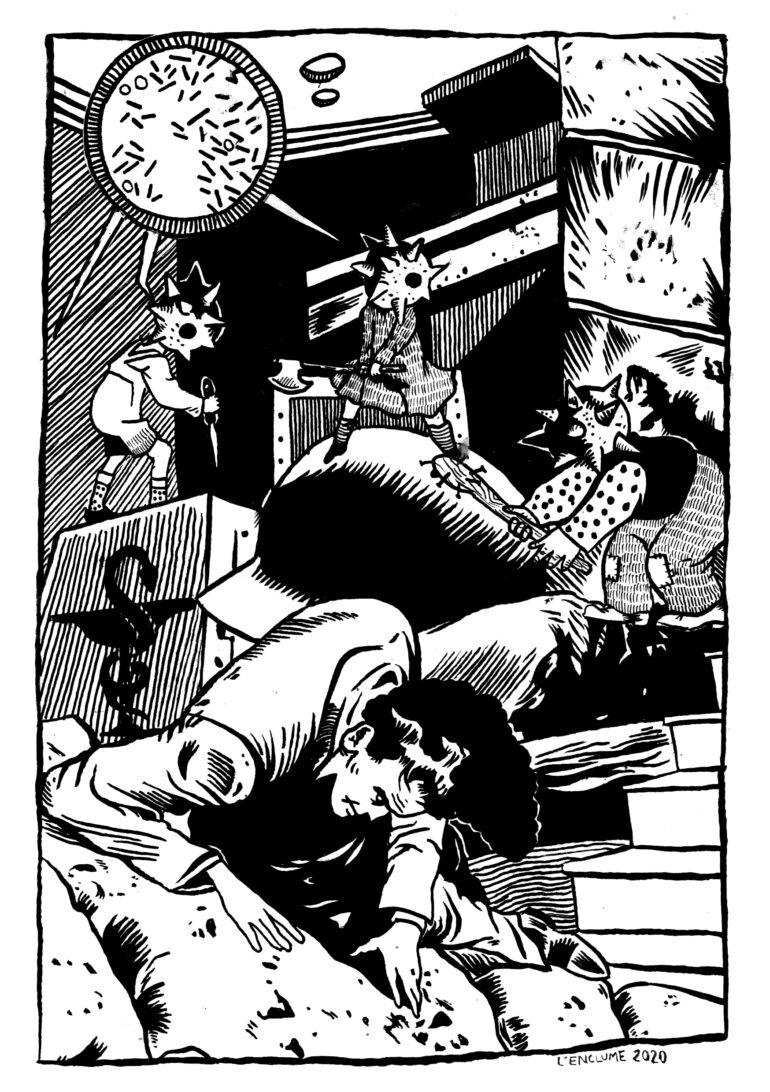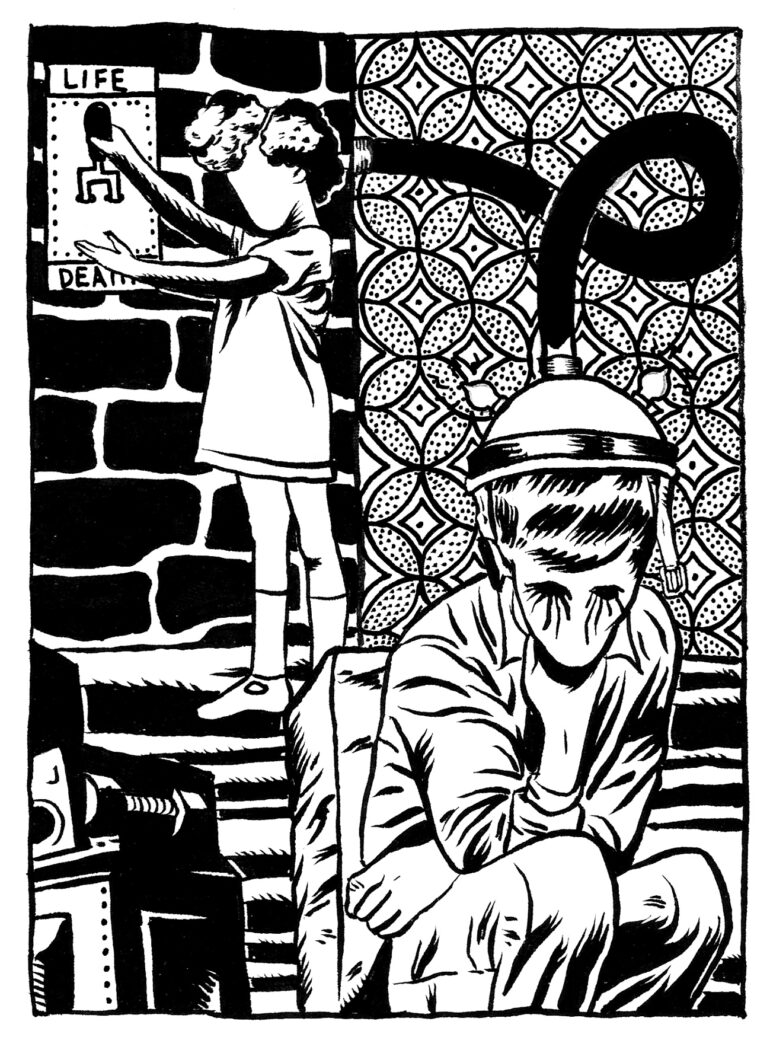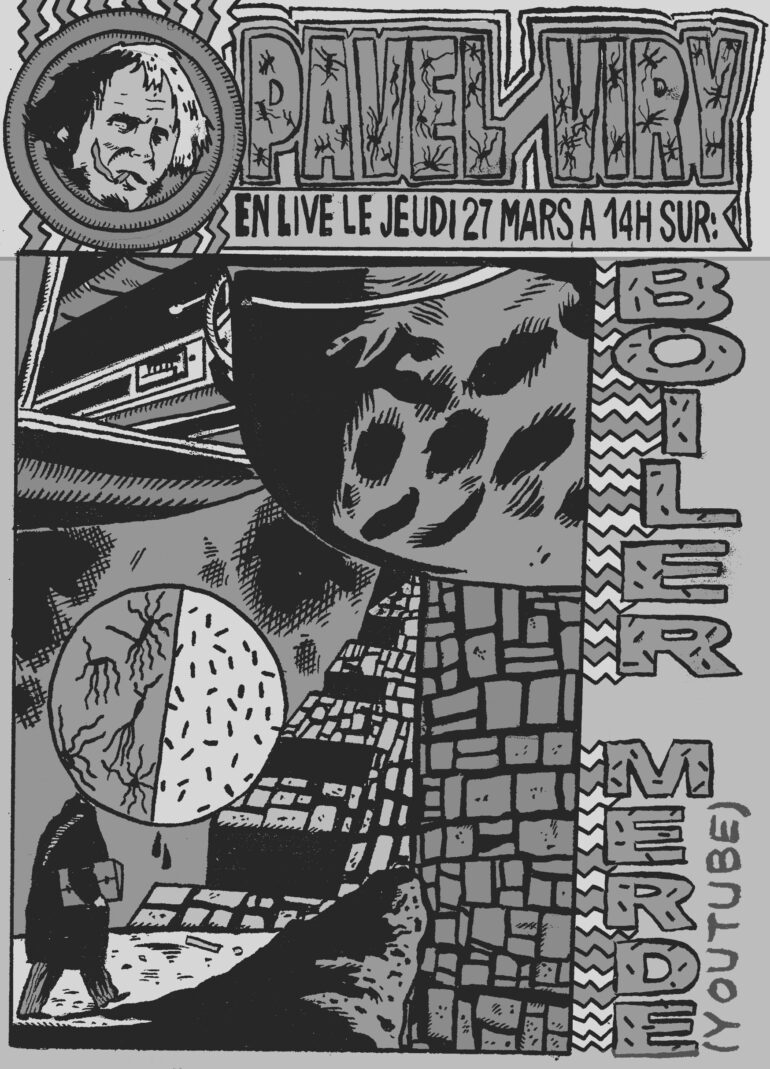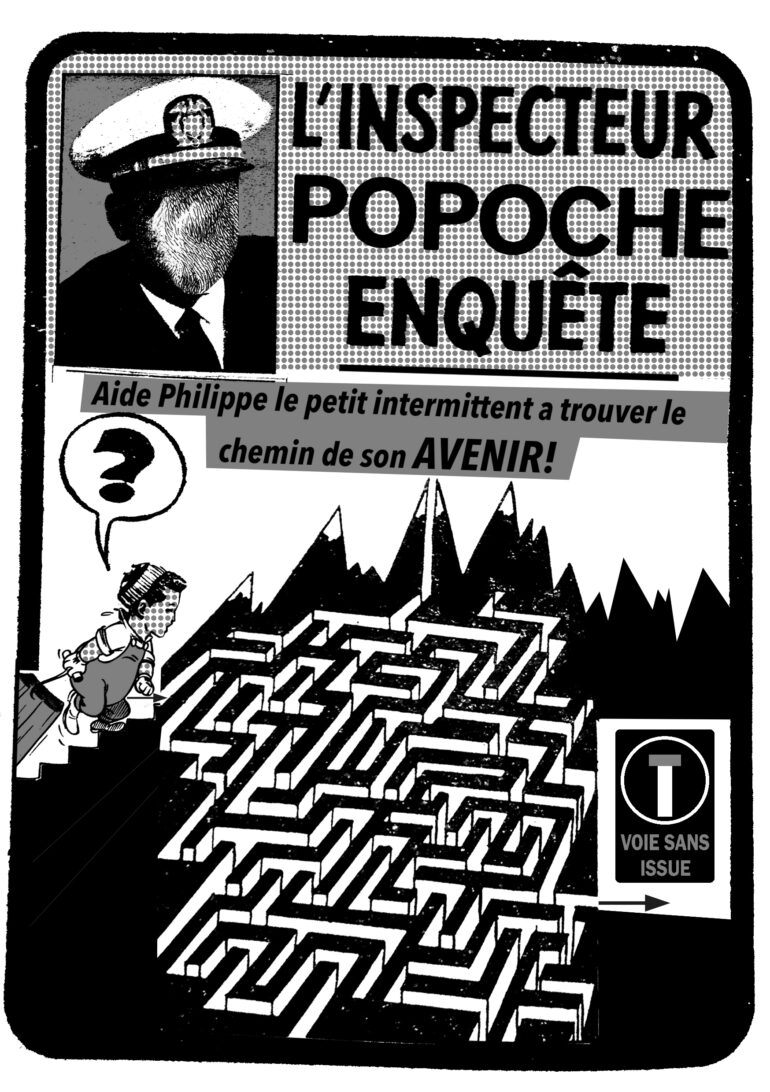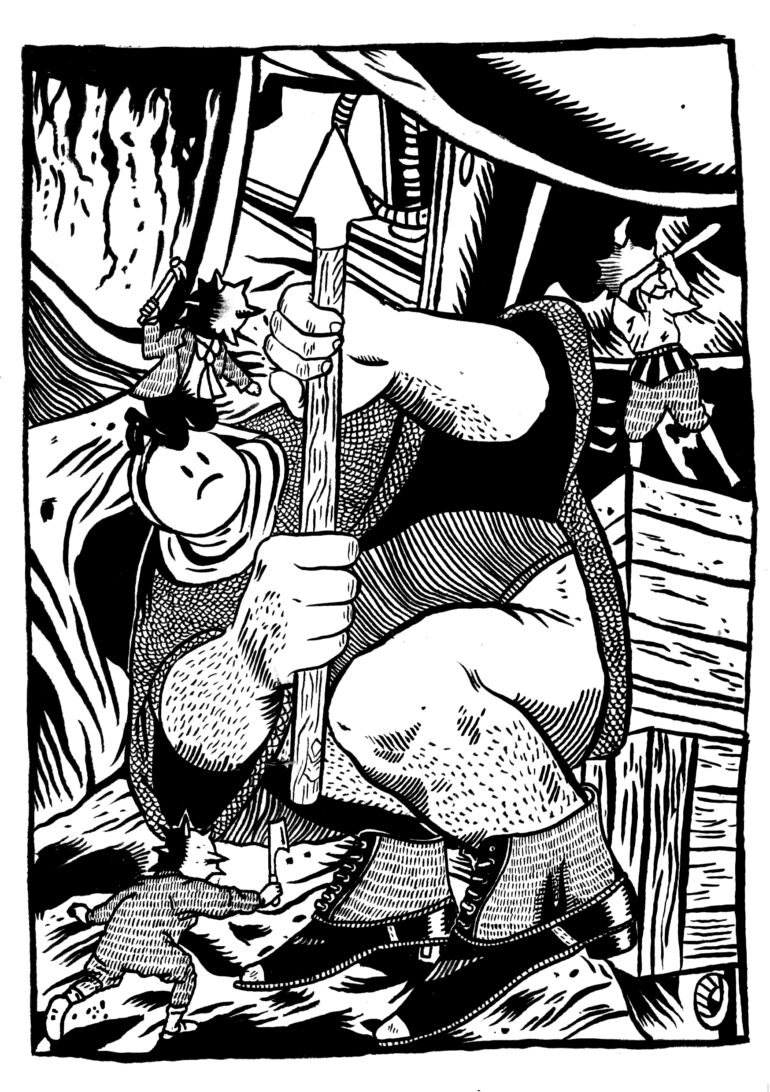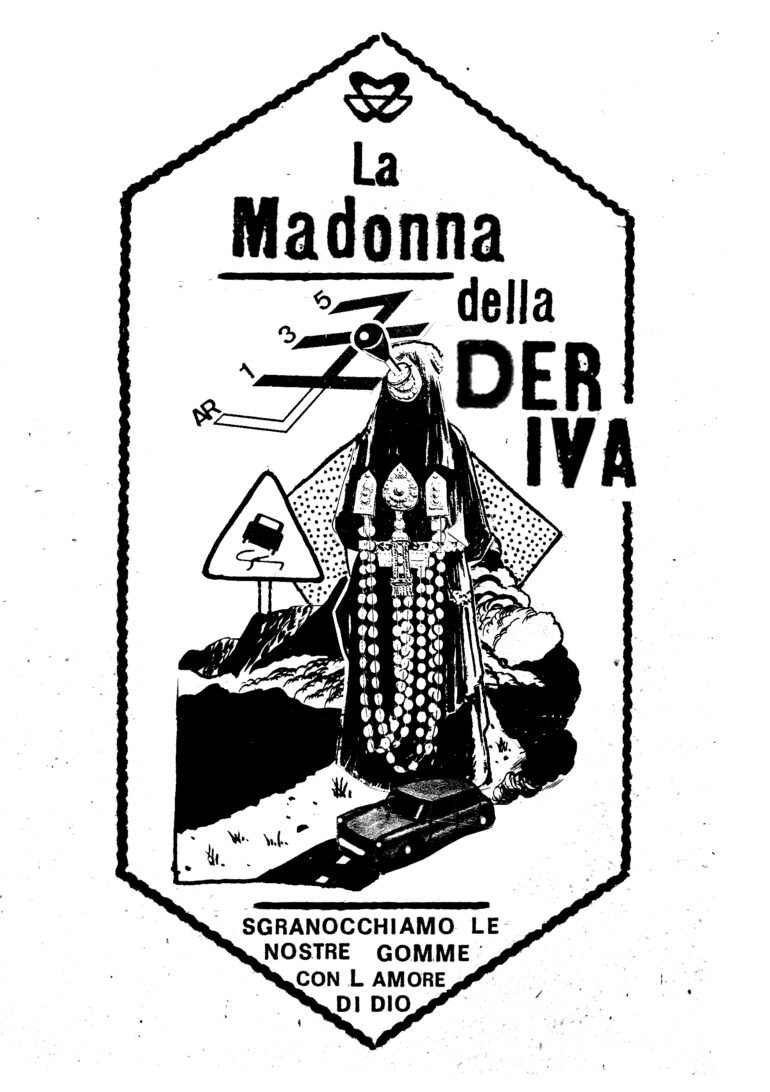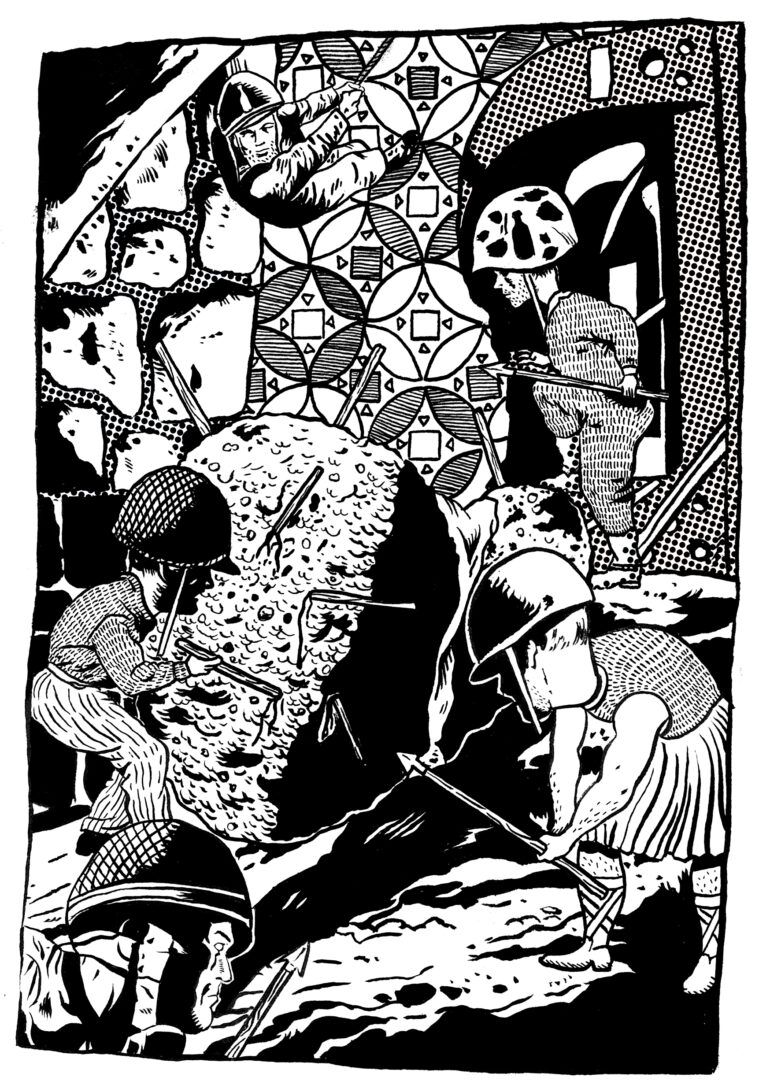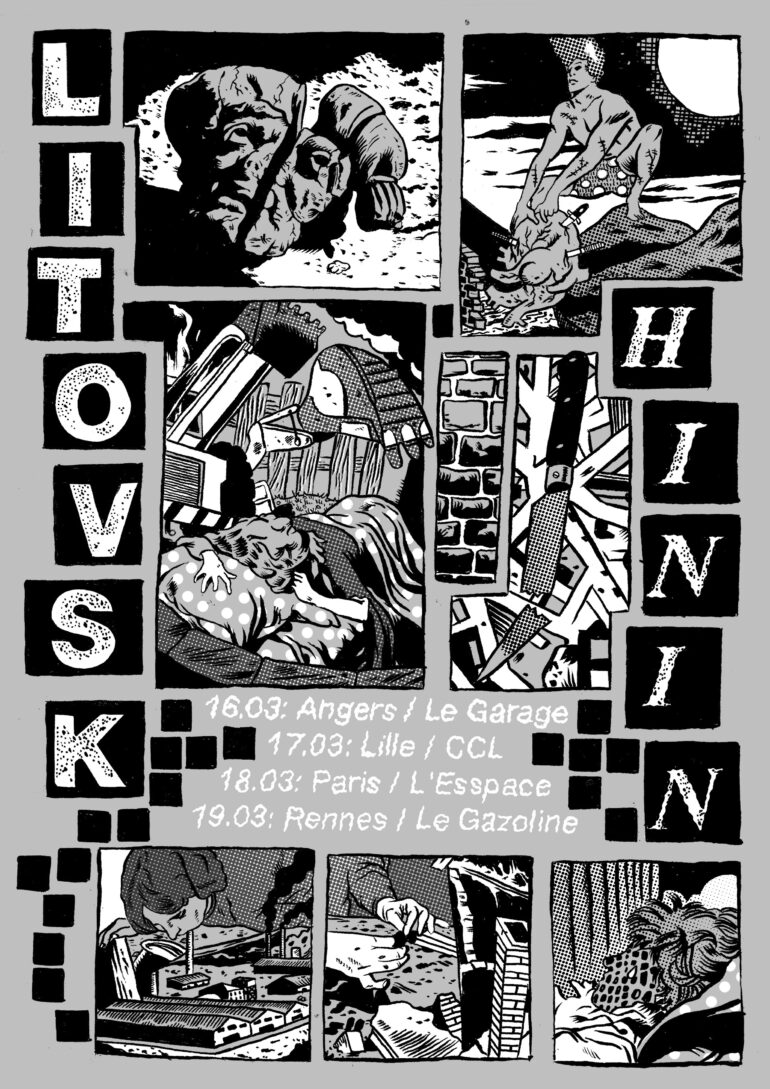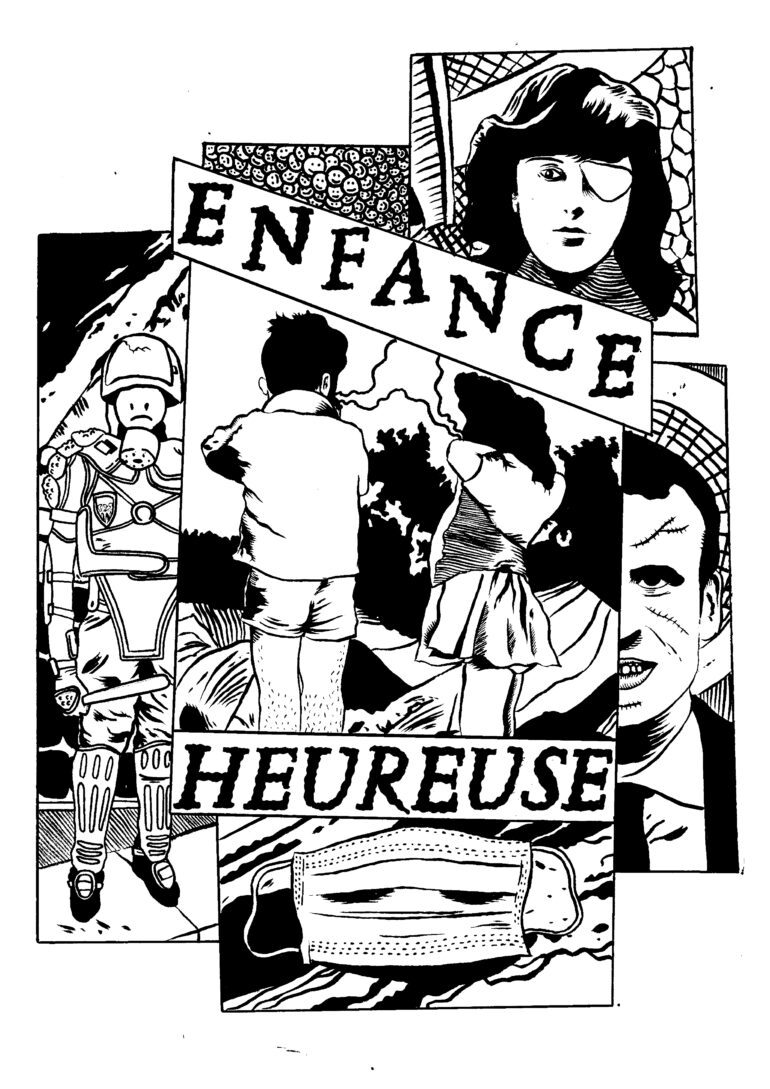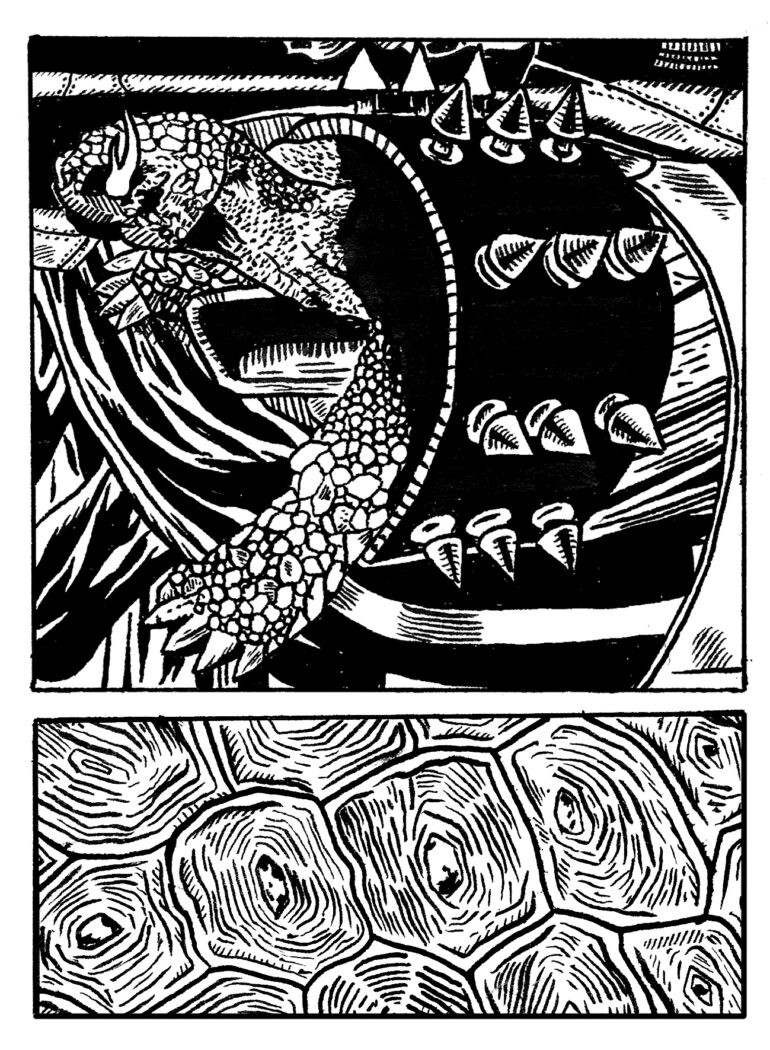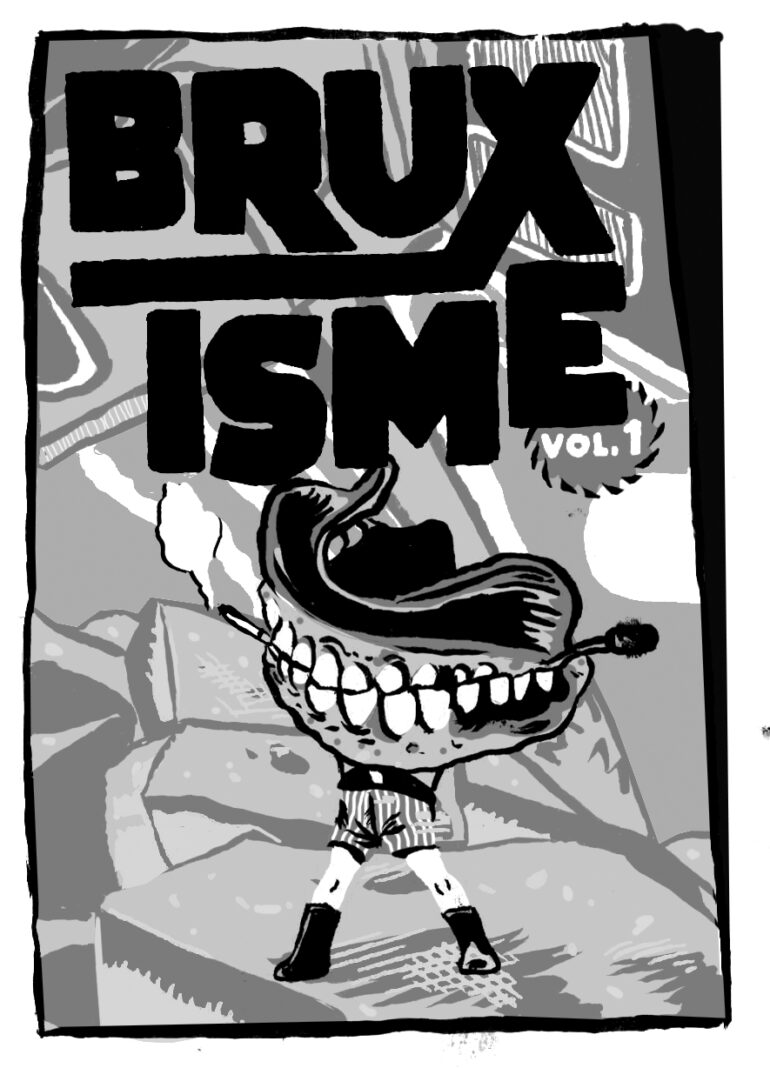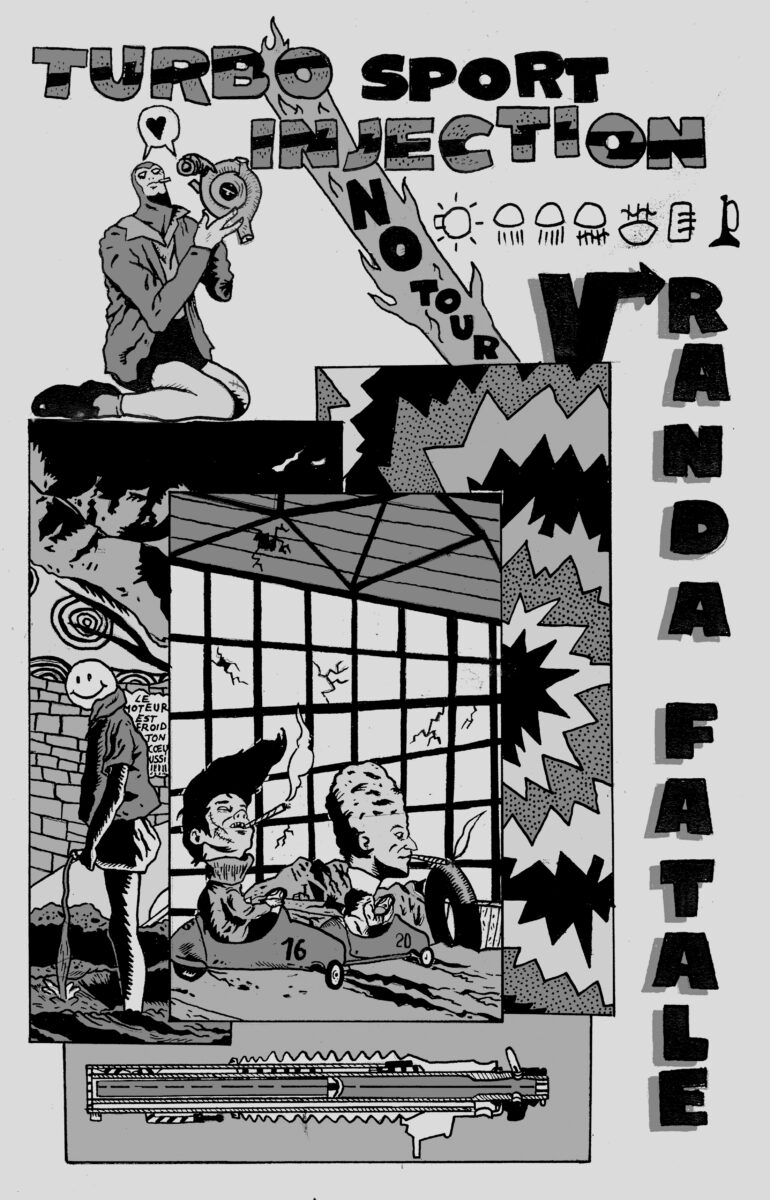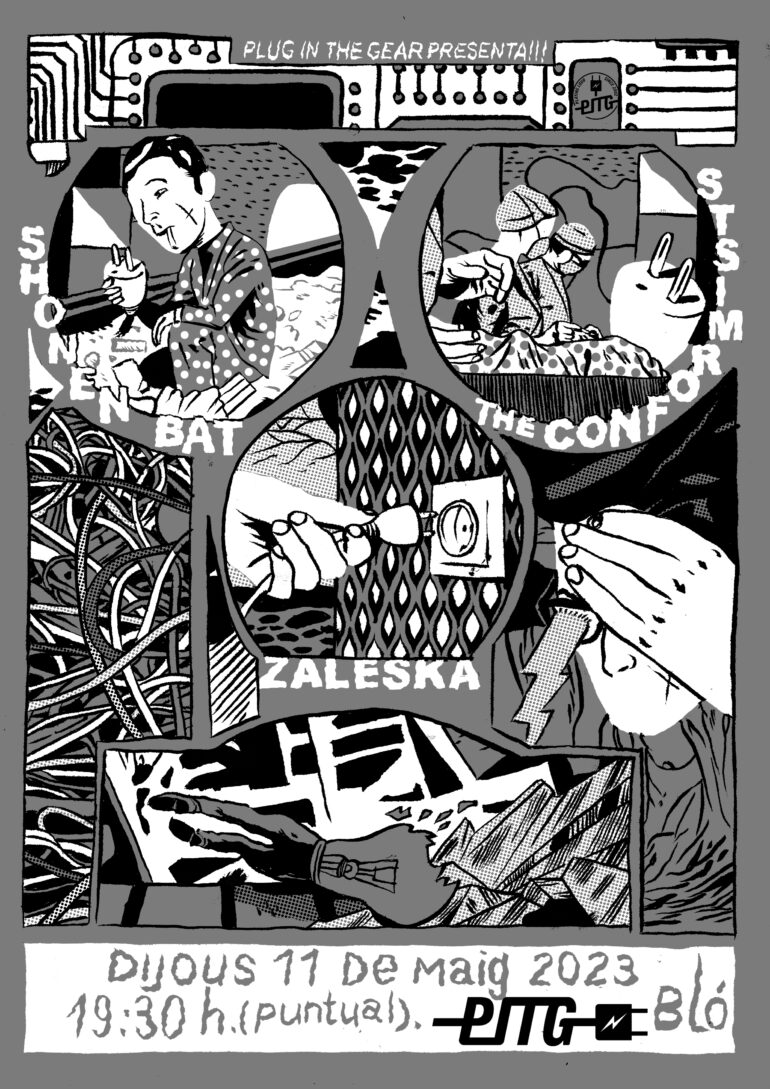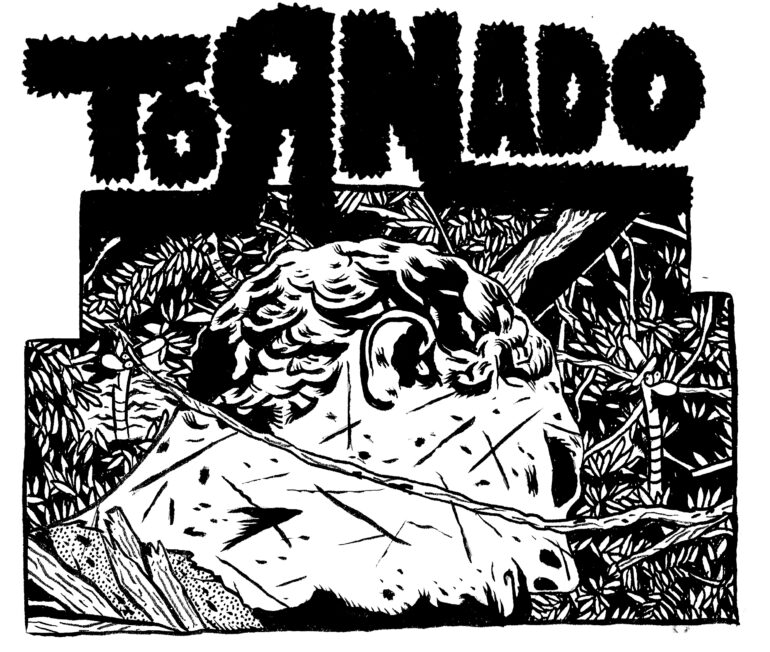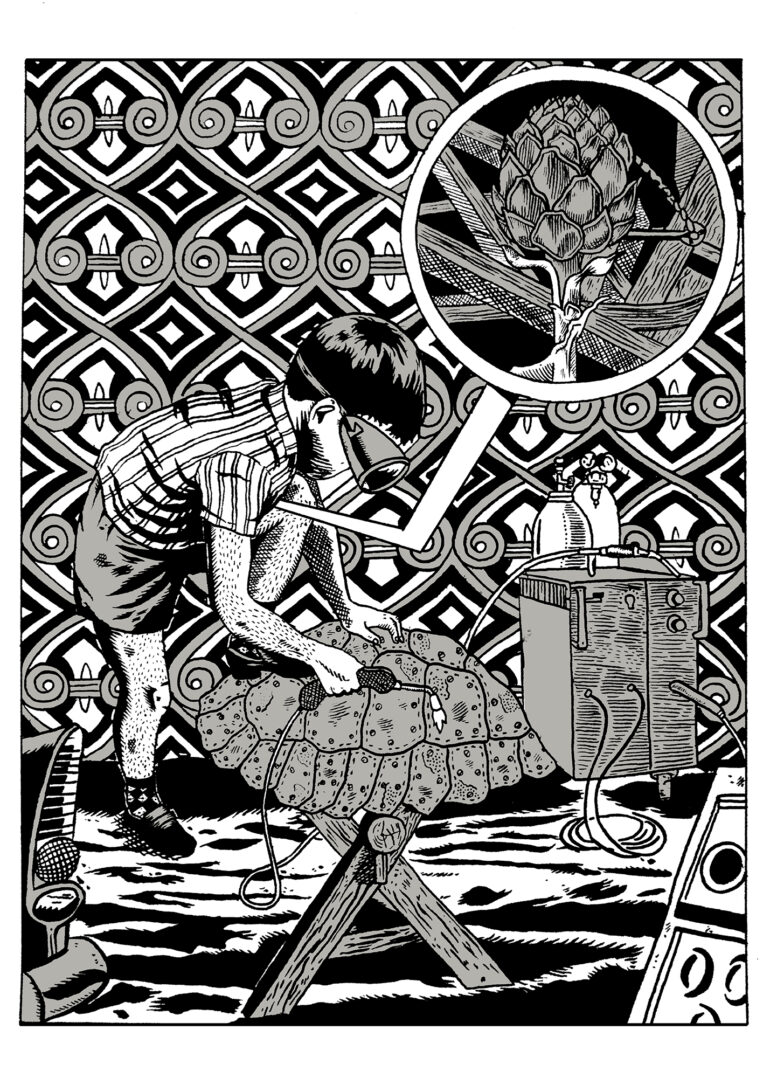Greyness, rain, old factories and cultural void. Welcome to Moselle, The place to be. Don’t laugh. What if boredom was necessary to express creativity? For Val l’Enclume in any case, this decorum was the root of his inspirations. Just listen to a few songs from his band, Oi Boys, to understand. When the occasional rays of light come spurting out from under the shades of grey. Conversely, his illustrations accentuate the contrast into a flashy color overlay. But don’t worry, Karton’s team has taken care of darkening the picture.
Do not count on us to put a little hope in our layout!
By Polka B. / Translated by Nino Futur

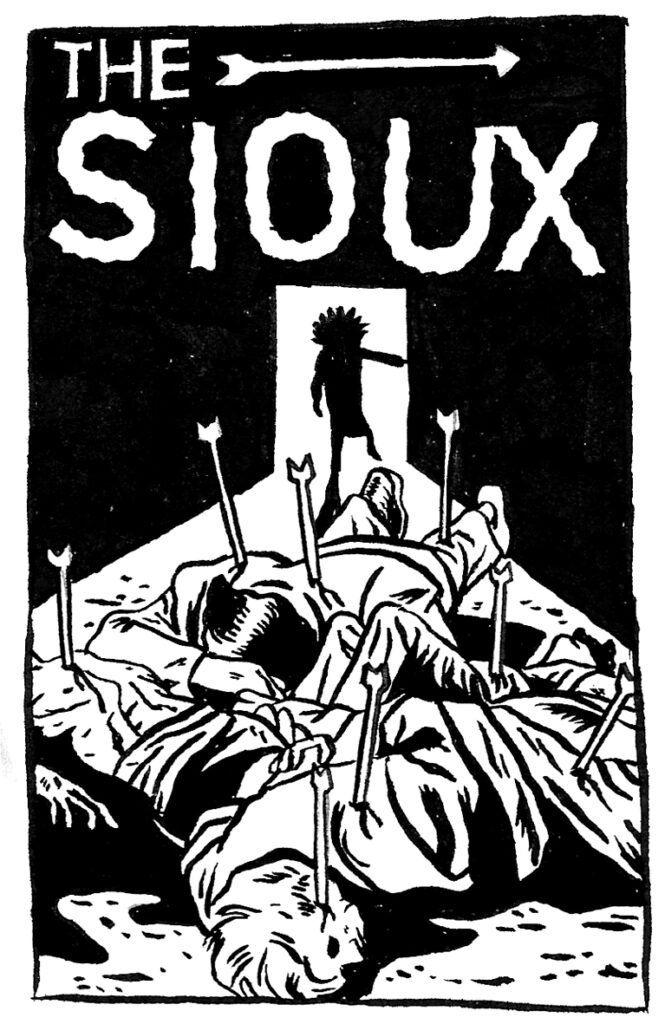
Are you from Metz?
I am originally from Moselle. I was born in Thionville, a sad and gray little town of 40,000 inhabitants where death and boredom reigns. It is about 30 km from Metz, down the Fensch valley. It’s an old countryside not very well known, there are no tourists in the streets, the sky often has strange tints, the name of townships ends in “angel”. ( Lavilliers said it).
Part of my family moved in this area in the 70s because there was plenty of work in the mines and in the blast furnaces.
At the time, there were people who supplied from everywhere (Italy, Poland, Spain, Maghreb, Portugal above all) and as my grandfather told me, there was lot of mutual help and kindness, work for everyone, it was pretty cheerful around here.
Since then, the factories have closed, the far right movement has risen, and the inhabitants are either unemployed or cross-border workers. Everything got even grayer…
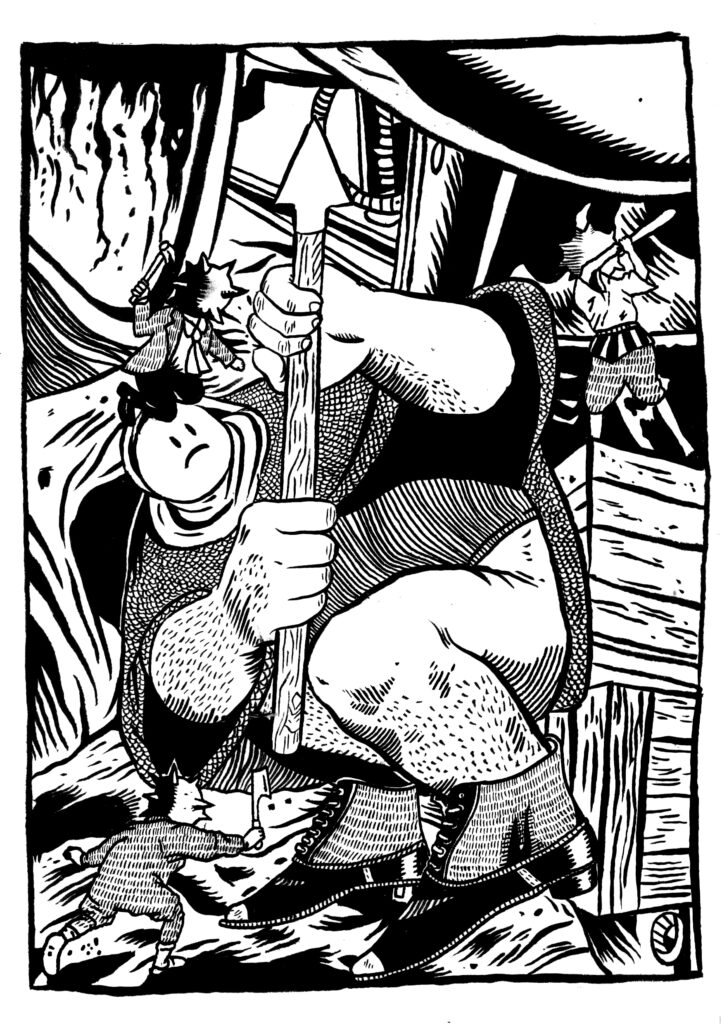
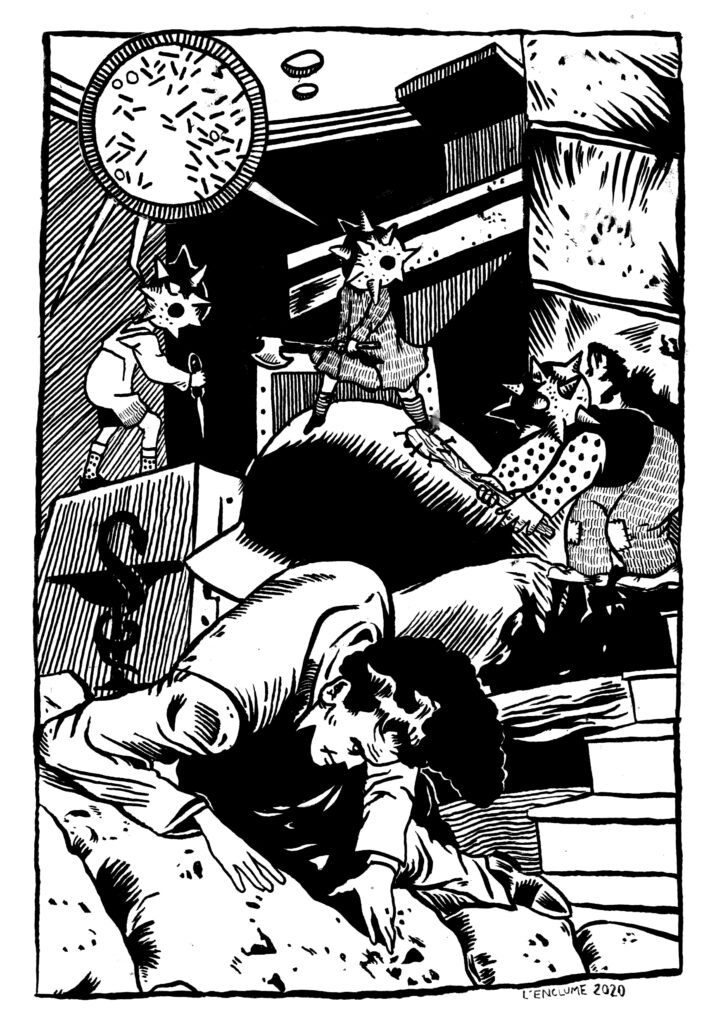
What’s it like growing up in the greyness?
I have that impression that when you grow up in the gray, you discover alcohol and the spliff a little faster than the others. You can even fall for it easily if you don’t find the right outlets.
I had the chance to discover skateboarding as a teenager.
I think that kind of saved me!
I’ve always been lousy, but at the skatepark I met lots of other young people like me (most of them are still very close friends!!).
Together we discovered punk, we played recorded CDs and mp3s, we went to our first concerts (not in Thionville because nothing was happening there, but in Metz, Nancy and Luxembourg).
All of this made me want to take up the guitar and try to start a band!
Jokes aside, the Metz scene has given birth to important names in the underground (like Noir Boy Georges), imbued with a filthy sadness, a bitterness and derision.
Unless it’s a musical journalist delirium… What do you think about it?
Here, we don’t have the sea, we don’t have the sun, we don’t have the mountains, it’s all flat, there aren’t many places for young people, so many take refuge in music, forming bands and lock themselves up in garages or cellars to rehearse. It’s always better than squatting the bus stops.
I don’t think it’s a frenzy of music journalists. I noticed that other cities with much the same history (former ossified and sad industrial cities like Amiens or Lille), had a very rich and creative music scene with sad and sincere lyrics!
It’s true that in Metz there has always been a pretty cool scene, with bands like Strong As Ten, Noir boy George, A.H KRAKEN, Le Singe Blanc, Avale, Cimetière de l’Est, Les Sioux…

We will talk about it more seriously after, but you are also a musician. Is your graphic design identity something totally different from your musical practice?
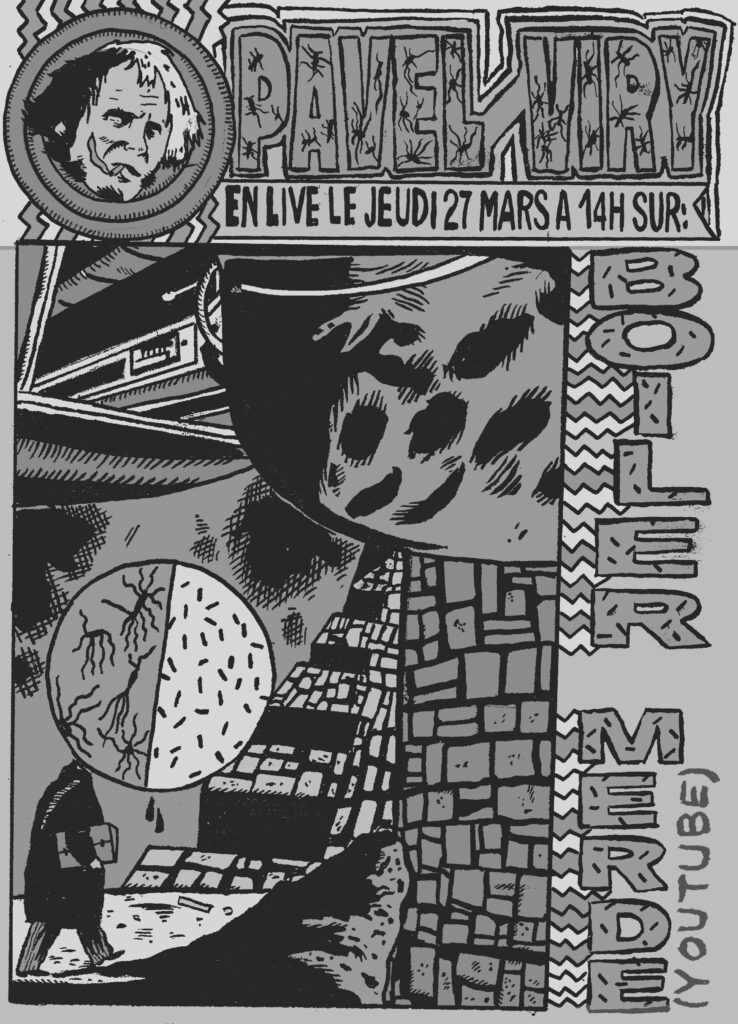
No. In the end, I started drawing to make the CD covers of my first bands and the posters for the first concerts of my friends. I was drawing to serve music above all!
Then it became something that calmed me down and kept me pretty busy. I can stay 6 hours drawing and still loving it! Even now, the majority of my “work” in drawing is album covers and concert posters, t-shirt images for friend’s bands.
I love trying to transcribe the atmospheres of music on paper, it’s a great challenge.
In the end, it’s an outlet, just like music. I would also like them to be able to take the same place in my life, but I am still trying to find the balance. At the moment with the tours of my band and the job, I am more a musician than a designer.
For us, your illustrations concentrate a tribute to the underground scene with something trashy, while referring to lot of pop culture references like comics.
How have your influences intertwined since your childhood (with, presumably, a lot of comic book readings)?
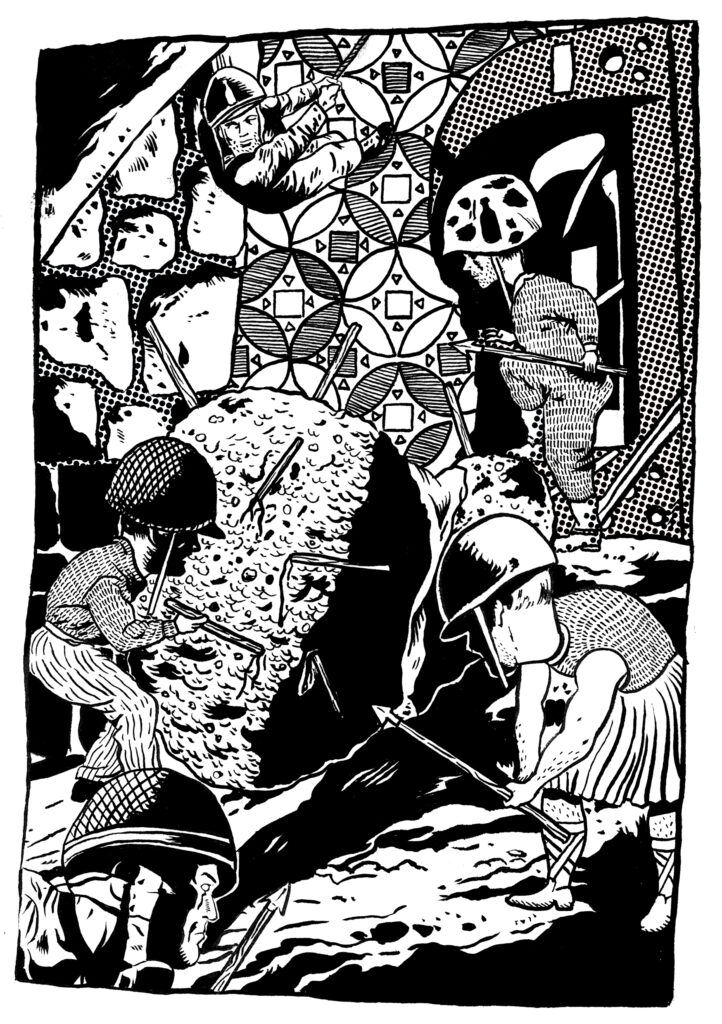
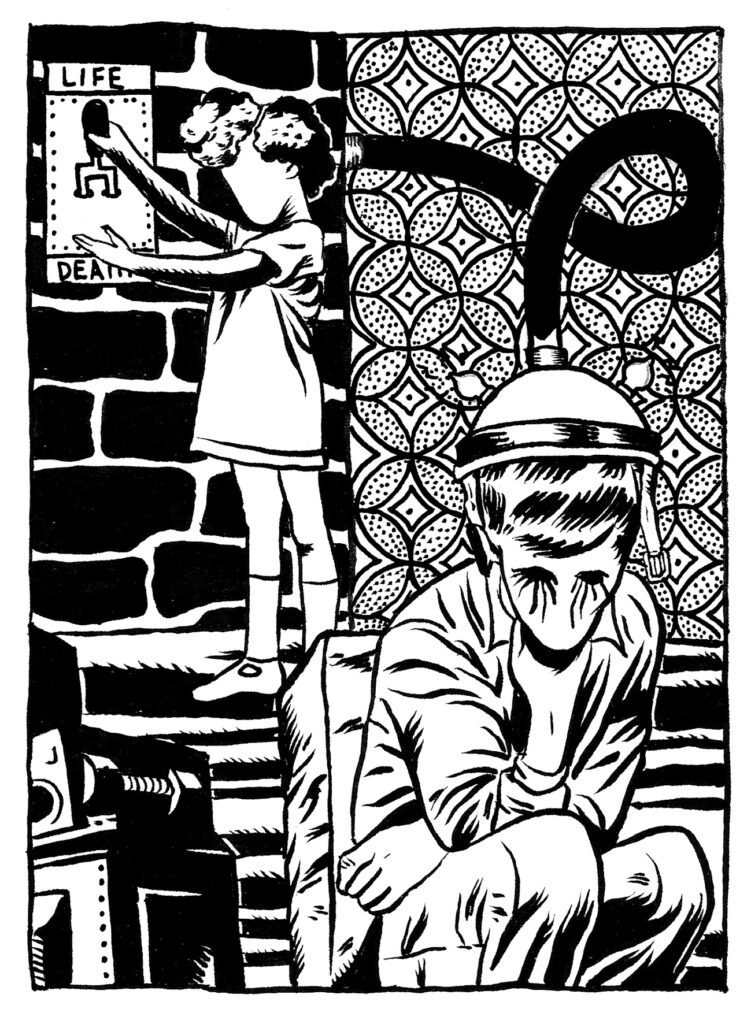
As a child when I was a good boy with grandmother, I had the right to have a Dragon Ball tome! I didn’t often go to my grandmother’s so I didn’t have many. I must have had a few disjointed volumes, so I was never able to follow the story but I watched them all the time because I thought they were so beautiful! Then a little later, at the media library, I came across comics by Matt Konture, Robert Crumb and Charles Burns.What a revelation! Ultra black and well-filled boxes, dark and trashy universes, it completely opened me up to all the underground comics.
Afterwards while digging, I discovered the collective Bazooka, Moolinex, Matsumoto, Pakito Bolino (because he had made a record cover for a Thionville band, Le Dernier Cri was not something on which you fell by chance).
I entered the uncompromising universe of Le Dernier Cri and micropublishing, I found myself in it a lot. People who had well-established universes and who self-published, who did everything themselves, with also a very strong link with music.
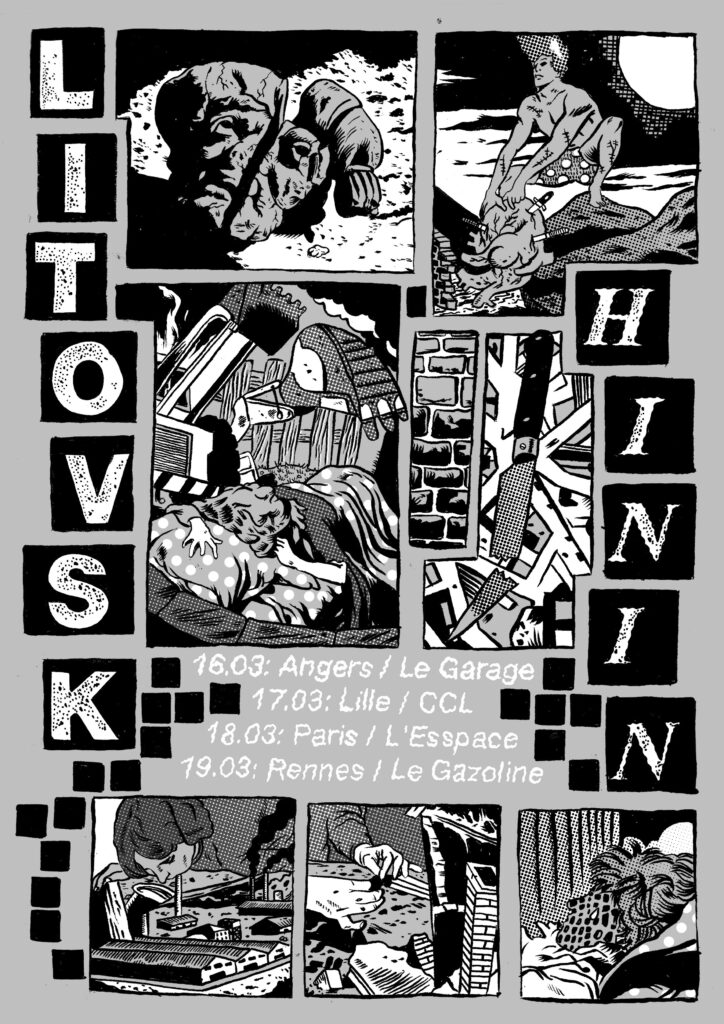
In 2015 I joined a concert organ collective called “Mâche Un truc”.
I was the official graphic designer, I did all the posters and visuals. There was a period when the collective organized about ten concerts a month, so I had to have enough ideas to follow!
I had taken a collection of comics from the 70s and I was doing collages with it, and then I was drawing stuff on top of it. This has remained my modus operandi to this day. I collect lots of station comics, I cut, I paste, I redraw and have a lot of fun!
Why did you mainly focus your graphic work around screen printing?
I discovered screen printing in 2008 with a friend from the Fensch valley when we had to print our cd covers. I realized that it went really well with the drawing, that the rendering was super clean and that it wasn’t very complicated. With my collective at the time, we quickly managed to be able to set up our own workshop in order to be independent and after that, I never stopped printing.
I find it great to be able to print your own fanzines and posters with super bright colors. Being able to do this on your own is game changing.
Since 2015 I have a workshop in the countryside 25 minutes from Metz that I share with my fake brother Raniero! We regularly have poster or book sessions, we draw around a theme or a subject and we will lock ourselves up there for 3/4 days and then we come out with an object. We don’t make orders, we only print for us or close friends. When people approach us for screen printing, we generally encourage them to come and do it themselves at the workshop. We frame a little, if necessary. But it’s super rewarding when you’ve made your t-shirts and posters yourself. We’re having a good time.
For us, your illustrations are in line with the work of the Marseille publishing collective « Le Dernier Cri ». Would you confirm? What does this authors collective represent for you?
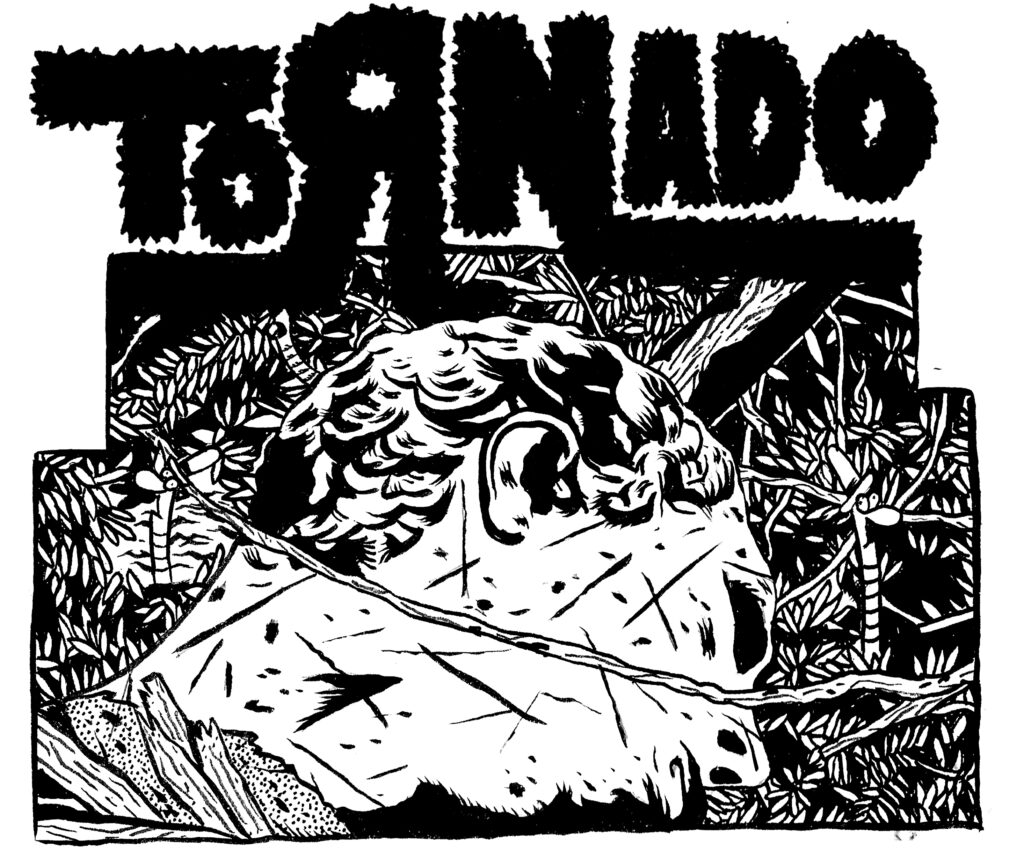
Yes, I agree with that. When I discovered « Le Dernier Cri » at 18, it was a big slap in the face. In each of their books, I have the impression of entering the brain of the artist. A sick brain.
Damn neurotic. It’s often close to raw art, unpretentious and then you recognize the DC touch with all the garish colors. When I started screen printing, I searched for colorizations like Pakito, I looked at the posters and I pumped the colors… Hihihi.
When we set up our first workshop, we quickly had micropublishing fairs. It’s a small environment, you quickly meet everyone. At a trade show, I found myself in front of the « Dernier Cri » stand. I had a pack of beer and then I passed some to Pakito and the other neighbors.
At 6 p.m. Pakito called me: “Hey kid, would you like to get me a bottle of water? “I was very proud, I ran to get him some water and when I came back with the bottle, he took out a pint of Pastis and said to me, ‘You’re efficient, you’ve just won a glass of Pastaga!! “We drank Pastis together and at the end of the show, he came to my stand and asked me “would you be okay with us exchanging stuff?”.
I was like crazy. He took a copy of every thing on my table (and at the time my fanzines were really rubbish) and he brought me lots of beautiful books from Le Dernier Cri! He said to me, “Is it okay for you?? I had a smile from ear to ear and I had won my weekend!!
A few years later, I published a little thing, I offered to edit it and he immediately said yes! He even offered to do the coloring. Since then, he always invites me to participate in his collective fanzines and he comes to see me when I come to play in Marseille.

You are part of the Metz punk band Oi Boys, author of a first album that had some success in the underground music scene (we also reviewed it here).
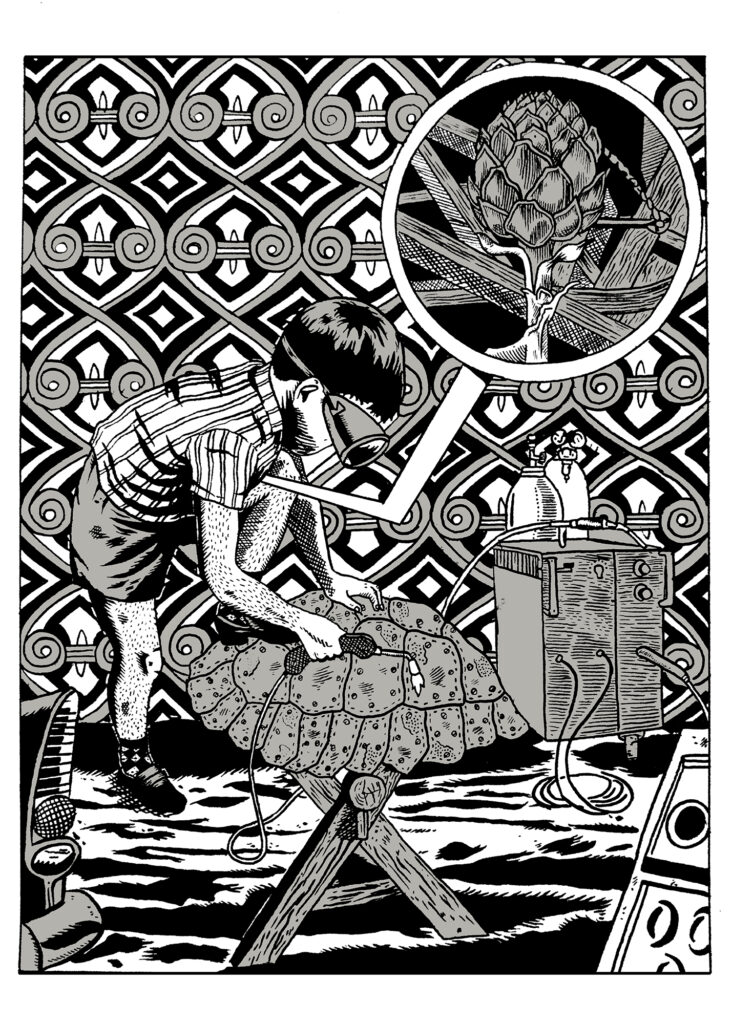
What are you doing in the band?
In this project I play guitar, make some backing vocals and sing a few verses.
I do it in pairs with Bat, who does the synth, the vocals and the Rhythm box. In concert, we are joined by Bastien on drums and Lelex on bass. A good group of friends. We work well like this.
Can you tell us about the genesis of this musical project?
In 2016, I had a Doom Spaghetti band with Bat and another mate named Ian. It was called Divojugend, we tried to do a sort of ultra slowed-down punk with Ennio Morricone-style Doom riffs. We recorded a K7, did a few gigs and we split.
There was something quite fusional between Bat and me, we liked to play together. He suggested to me right away that we set up a little project together, something unpretentious.
I had just found a 20 bucks synth at a flea market. I gave him and I took the guitar.
We never did rehearsals, the idea was to have fun by recording songs on your computer.
It was logical for Bat to write in French, he could go further. And then he grew up with punk and Oi. it’s straight out like that.
Nothing intellectualized here !
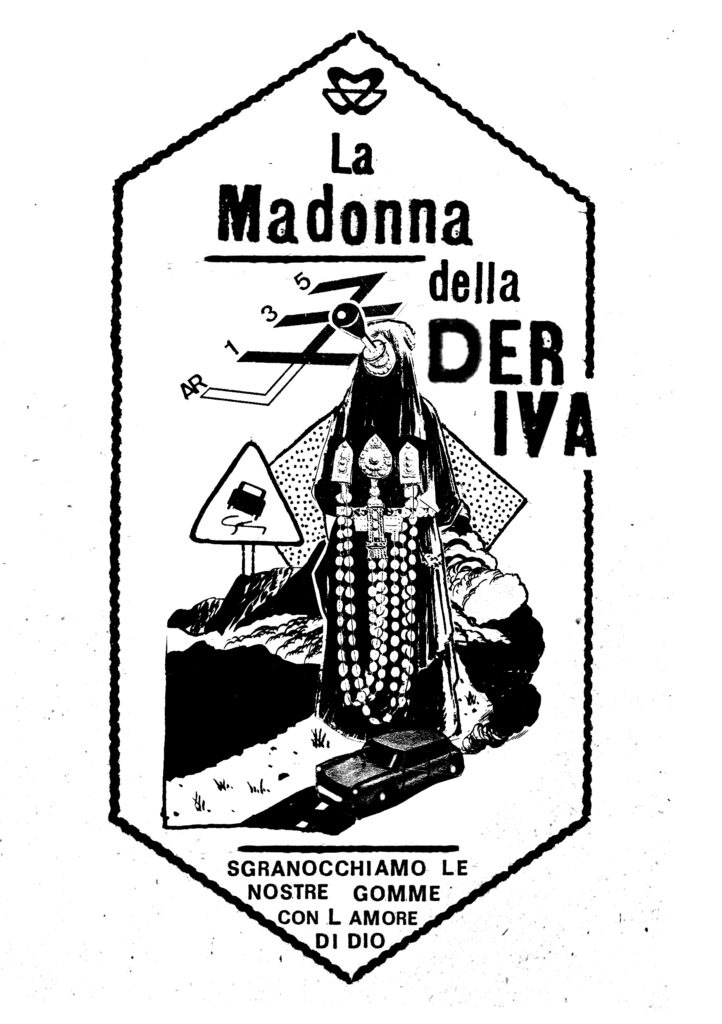
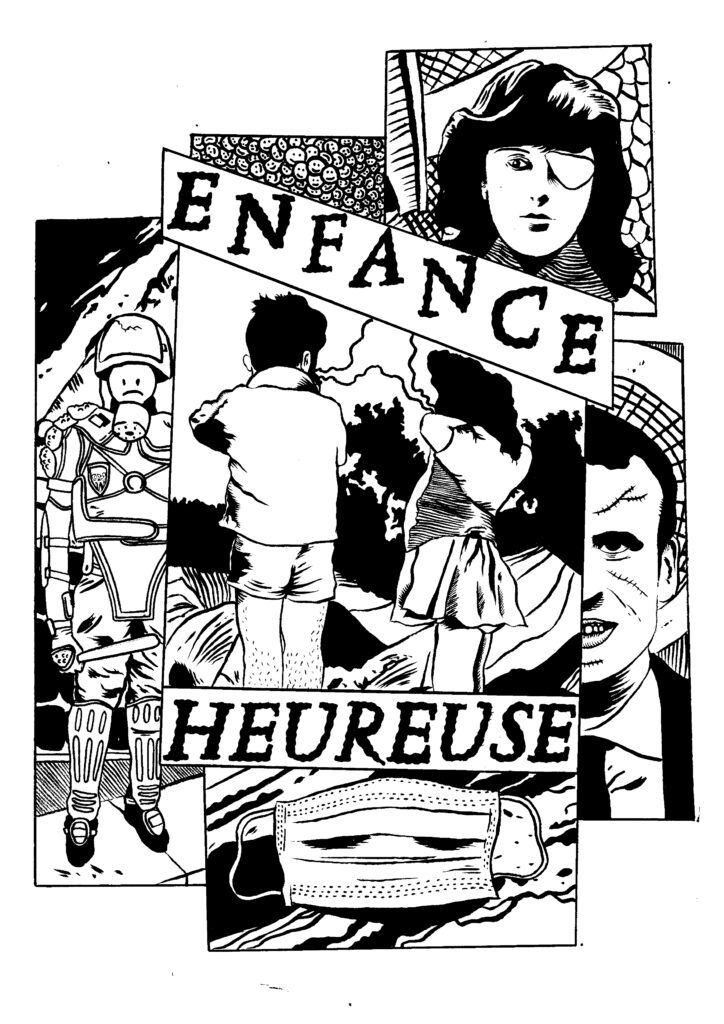
How did you experienced the reception of this first album? Was it something you anticipated?
No not at all. It was really unexpected. Basically, we didn’t even want to do a single concert. In the end, it pleased a lot of friends, some of whom had labels, so we decided to make a plate out of it.
Since we started doing lives, the proposals have never stopped! We know that we are very lucky.
What are your best concert memories?
One of my stunniest memory was during the first Oi Boys tour. We were going to play at L’Avenir in Brest with Utopie and Litovsk (two bands we love). We started to play, the Avenir was fully packed of people and half the audience started singing with us!! We were 1000 km from home and people knew the lyrics by heart.
Something like that had never happened to us and we were really blown away, especially since it wasn’t even our 10th concert…
Now I had the same little thrill in Athens, I saw Greeks singing our lyrics! We were not 1000km from home but 2600… and you see Greeks singing in French! Amazing!
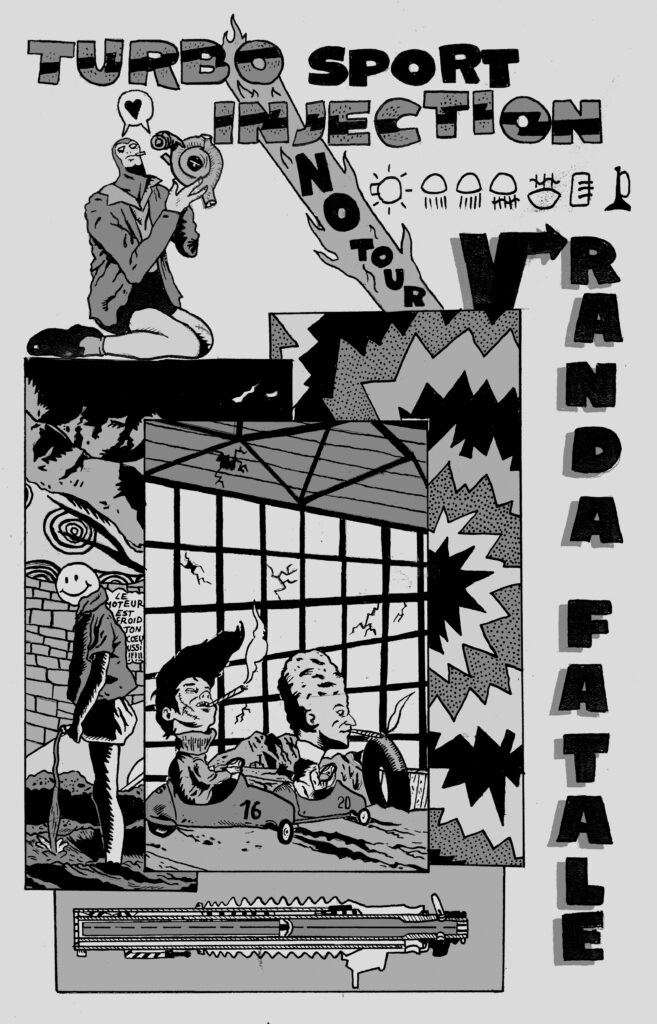
What are the upcoming projects for Oi Boys?
We are preparing a new album at the moment.
We’ve made great progress, but we want to take the time to really polish everything!
We are also working on a Split with Syndrome 81.
Each group covers a track from the other, with two new compositions per group. I can’t wait to see how this turns out!

Finally, can you give us your latest listener musical crush?
Right now I’m really into this vinyl called Bobby Ramone «Rocket to Kingston ». It’s a mash-up of Bob Marley’s vocals on Ramones type beats. There is a Bad Brainsish vibe and it works so well! To check a song I would say « I don’t Wanna Stand up ».
